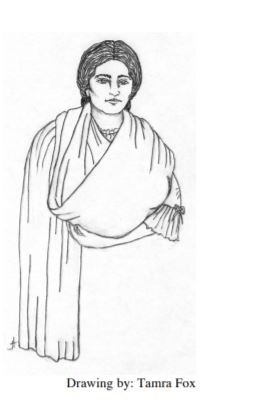Part of a series of articles titled Women's History in the Pacific West - California-Great Basin Collection.
Previous: Wanda Muir-Hanna
Next: Caro Luevanos-Garcia
Article

Courtesy of the National Park Service.
María Feliciana Arballo, a 25-year-old widow of Afro-Latina descent with two small children, was one of about forty women in the Anza expedition when it began its colonizing journey from Sonora, Mexico to Alta California (upper California) in 1775. Juan Bautista de Anza specifically recruited families for this expedition, which was meant to place a Spanish stronghold in California and populate the region with Spanish-descended settlers. The people Anza recruited came from many settlements throughout Mexico, and were of European, Indigenous, and African descent.1 Arballo became an early settler of California, and her children rose to prominence in Californio (Spanish colonial) society.
Arballo was born around 1750 to Francisco Arballo and María Trinidad, in the state of Sinaloa, Mexico, likely in Culiacán.2 She married Juan José Gutiérrez in 1768. Her marriage record listed both Arballo and Gutiérrez as “mulatos libres,” meaning “free mulattos.” Gutiérrez and Arballo were recruited for the Anza expedition in spring 1775.3 Gutiérrez, who was one of Anza’s soldiers, died during an Indian conflict about a month before the expedition left.4 This death would have normally disqualified Arballo from going on the expedition with her two young daughters, but she was allowed to continue possibly because some of her husband’s family was likely also on the expedition.5 She joined the expedition with her 4-year-old and infant daughters, probably placing her eldest, María Tomasa, behind her in the saddle and carrying her infant, María Eustaquia, in front in a rebozo, a popular and versatile garment used by women on the Spanish frontier as a shawl, wrap, or general covering.6
The diaries of Anza and fellow expeditioner Father Pedro Font suggest the conflicting gender expectations that women like Arballo confronted during the journey. Fandangos were held a few times in December 1775, and Arballo sang verses that were “applauded and cheered” by others in the camp as they danced. Font disapproved of her singing, calling her a “very bold widow” and chastising the camp members who took part in the fandango in his sermon the following day.7 Arballo did not remain with the expedition for its entire journey to San Francisco. She stayed behind at Mission San Gabriel and married Juan Francisco López on April 7, 1776.8
Settlers from the Anza expedition spread throughout various areas of California and doubled the Spanish population of the region in 1776.9 By 1790, Arballo lived in San Diego with López and their five children.10 López died in 1800, and Arballo married Mariano Tenorio at Mission San Diego that same year.11 In all, Arballo had ten children, with eight living to adulthood. The daughters who came with her on the expedition married into prominent California families. Her daughter María Eustaquia Gutiérrez, who was an infant on the trail, was the mother of Pio Pico, the last governor of Alta California. María Tomasa, her eldest daughter, married Juan José Sepulveda, part of a notable family in the San Diego region. Arballo died at some point after 1817.12 Arballo’s life shows how essential families and strategic marriages were to the Spanish colonization of California.
Part of a series of articles titled Women's History in the Pacific West - California-Great Basin Collection.
Previous: Wanda Muir-Hanna
Next: Caro Luevanos-Garcia
Last updated: March 2, 2022